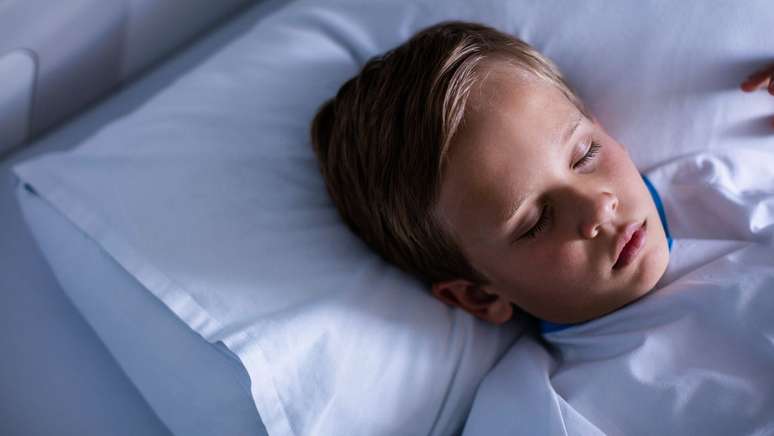The mother in the United States took her son to see more than 15 specialists and no one found out what he had; the diagnosis came with the use of ChatGPT
How far is it to generative artificial intelligence Can you go to healthcare? In the United States, the report of a mother who was only able to diagnose her son’s rare disease – a type of congenital malformation – goes viral thanks to the support of ChatGPT and a Facebook group. Before that, Courtney’s son had visited 17 doctors and other healthcare providers, such as dentists, without success, over the course of 3 years.
- Bill Gates Backs Brazilian Startup to Create ‘ChatGPT for Hospitals’
- ChatGPT recommends cancer treatment full of errors
Alex’s journey to getting a diagnosis for his pain began at age 4. At the time, the boy took ibuprofen every day – medicine prescribed as an anti-inflammatory and analgesicsold without a prescription.
Over the years, the child showed up heachache, constant tiredness, personality changes, tantrums and dragging my left foot when I walked. She also suffered from growth problems.
Diagnosis for the mysteriously ill child
After consultations with specialists, Alex received diagnoses of the most varied types, such as bruxism and Arnold-Chiari malformation. In fact, one pediatrician classified the reported changes with the psychosocial effects imposed by the covid-19 pandemic.

“We went to many doctors. At a certain point we even ended up in the emergency room,” the mother told the newspaper Today. When she reached her limit, she turned to a generative AI chatbot. There, she detailed everything she knew about her son’s case and her symptoms.
ChatGPT helps in the identification of rare diseases
According to Courtney, ChatGPT suggested tethered cord syndrome, also known as tethered cord syndrome, as the diagnosis. Interestingly, the disease intensifies as the child grows, which explains why the son’s symptoms worsened.
It is worth pointing out that this “is a rare neurological condition in which the spinal cord is attached (tied) to the surrounding tissues of the spine. This prevents the spinal cord from moving to keep up with the lengthening of the spine as it grows,” explains an article from Stanford University.
In most cases, children report intense pain, but this varies depending on the degree of the condition. Furthermore, the condition is almost always associated with spina bifida, which is a congenital defect of the spine: the spine does not close completely.
The Facebook support group was important
After the alleged ChatGPT diagnosis, the mother searched for more information about the rare disease on the Internet and found a Facebook group made up of families who had children with the same health problem. Reading published stories, Courtney found that most patients suffered from not being able to immediately diagnose the condition.

Armed with new information, the child underwent a new consultation with a neurosurgeon: this doctor was not on the list of those previously consulted. After reviewing the MRI scans, the doctor highlighted the spina bifida problem and confirmed the diagnosis of tethered cord syndrome.
Perhaps the patient’s biggest problem was the fact that his case was atypical, known as spina bifida occulta. In short, Alex’s spine was open, but the spinal cord was not out of its normally expected position. Therefore, he did not show the characteristic signs of the condition.
After this long journey of many mistakes until he discovered the name and specific treatment for his disease, the boy finally underwent surgery and is recovering well from the surgery.
Can ChatGPT diagnose diseases?
After reading this report, it is tempting to say that ChatGPT can replace doctors and be used routinely to diagnose diseases. However, the reality is not exactly this. This feature is far from the ideal use of the AI tool. On the other hand, it can provide valuable intuitionsas happened with Courtney, which needs to be confirmed clinically.
Indeed, the use of generative AI has already been pioneered in medicine, with numerous projects in development or implementation. For example, In Brazil, a startup is developing a chatbot that will help doctors reduce the overprescribing of antibiotics.

On the contrary, recent research found that when asked to recommend cancer treatments, ChatGPT still leads to many errors. More dangerous, the instrument can generate hallucinationsthat is, suggesting things that don’t exist, which can be a big problem in the medical field.
What is needed to improve the technology?
In the current scenario, including the mother’s account to the press, Jesse M. Ehrenfeld, president of the American Medical Association (AMA), says that the potential use of this technology in the medical field cannot be ruled out. But it still needs to be perfected before arriving in doctors’ offices.
Therefore, Ehrenfeld argues: “Just as we demand evidence that new medicines and biologics are safe and effective, we must also demand clinical evidence on the safety and effectiveness of new AI-based healthcare applications,” such as chatbots.
Source: Today AND Stanford University
Trends on Canaltech:
- Big Bang fossil found near the Milky Way
- TCL C845 Review | TV with Mini LED screen and powerful sound
- HeyGen | Artificial intelligence translates videos with surreal quality and maintains the original voice
- The nasal decongestant in flu tablets has no effect, the FDA says
- Brazil x Peru | How to watch the Seleção play in the World Cup qualifiers?
- iPhone prices DROP in Magalu with the launch of the iPhone 15
Source: Terra
Rose James is a Gossipify movie and series reviewer known for her in-depth analysis and unique perspective on the latest releases. With a background in film studies, she provides engaging and informative reviews, and keeps readers up to date with industry trends and emerging talents.


![New day: caused by anger [SPOILERS] New day: caused by anger [SPOILERS]](https://fr.web.img2.acsta.net/img/9c/a1/9ca192e344f96b186084f920d4eaf50b.jpg)



